5.1E: Exercises for Section 5.1
- Last updated
- Jun 24, 2021
- Save as PDF
- Page ID
- 70510
( \newcommand{\kernel}{\mathrm{null}\,}\)
1.) State whether the given sums are equal or unequal.
and and
- Answer
- a. They are equal; both represent the sum of the first 10 whole numbers.
b. They are equal; both represent the sum of the first 10 whole numbers.
c. They are equal by substituting
d. They are equal; the first sum factors the terms of the second.
In exercises 2 - 3, use the rules for sums of powers of integers to compute the sums.
2)
3)
- Answer
Suppose that
In exercises 4 - 7, compute the sums.
4)
5)
- Answer
6)
7)
- Answer
In exercises 8 - 11, use summation properties and formulas to rewrite and evaluate the sums.
8)
9)
- Answer
10)
11)
- Answer
Let
In exercises 12 - 19, compute the indicated left and right sums for the given functions on the indicated interval.
12)
13)
- Answer
14)
15)
- Answer
16)
17)
- Answer
18)
19)
- Answer
20) Compute the left and right Riemann sums—
21) Compute the left and right Riemann sums—
- Answer
is a triangle with area
22) Compute the left and right Riemann sums—
23) Compute the left and right Riemann sums—
- Answer
For exercises 24 - 27, express the following endpoint sums in sigma notation but do not evaluate them.
24)
25)
- Answer
26)
27)
- Answer
In exercises 28 - 33, graph the function then use a calculator or a computer program to evaluate the following left and right endpoint sums. Is the area under the curve between the left and right endpoint sums?
28) [T]
29) [T]
- Answer
-
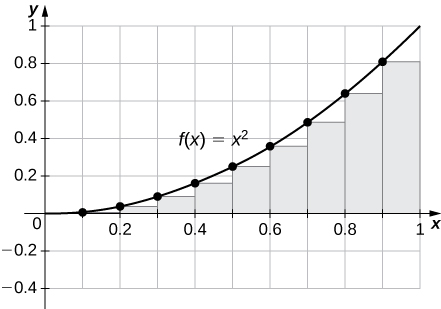
The plot shows that the left Riemann sum is an underestimate because the function is increasing. Similarly, the right Riemann sum is an overestimate. The area lies between the left and right Riemann sums. Ten rectangles are shown for visual clarity. This behavior persists for more rectangles.
30) [T]
31) [T]
- Answer
-
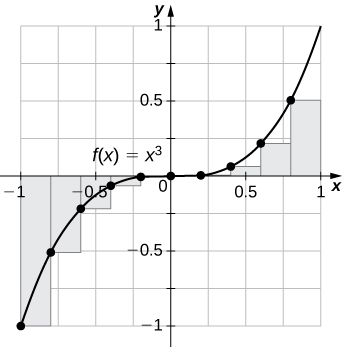
The left endpoint sum is an underestimate because the function is increasing. Similarly, a right endpoint approximation is an overestimate. The area lies between the left and right endpoint estimates.
32) [T]
33) [T]
- Answer
-
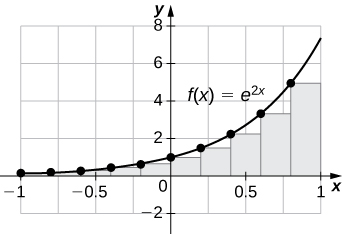
The plot shows that the left Riemann sum is an underestimate because the function is increasing. Ten rectangles are shown for visual clarity. This behavior persists for more rectangles.
34) Let
35) Let
- Answer
- The sum represents the cumulative rainfall in January 2009.
36) Let
37) To help get in shape, Joe gets a new pair of running shoes. If Joe runs 1 mi each day in week 1 and adds
- Answer
- The total mileage is
38) The following table gives approximate values of the average annual atmospheric rate of increase in carbon dioxide (CO2) each decade since 1960, in parts per million (ppm). Estimate the total increase in atmospheric CO2 between 1964 and 2013.
| Decade | Ppm/y |
|---|---|
| 1964-1973 | 1.07 |
| 1976-1983 | 1.34 |
| 1984-1993 | 1.40 |
| 1994-2003 | 1.87 |
| 2004-2013 | 2.07 |
Average Annual Atmospheric CO2 Increase, 1964–2013 Source: http://www.esrl.noaa.gov/gmd/ccgg/trends/.
39) The following table gives the approximate increase in sea level in inches over 20 years starting in the given year. Estimate the net change in mean sea level from 1870 to 2010.
| Starting Year | 20- Year Change |
|---|---|
| 1870 | 0.3 |
| 1890 | 1.5 |
| 1910 | 0.2 |
| 1930 | 2.8 |
| 1950 | 0.7 |
| 1970 | 1.1 |
| 1990 | 1.5 |
Approximate 20-Year Sea Level Increases, 1870–1990
Source: http://link.springer.com/article/10....712-011-9119-1
- Answer
- Add the numbers to get 8.1-in. net increase.
40) The following table gives the approximate increase in dollars in the average price of a gallon of gas per decade since 1950. If the average price of a gallon of gas in 2010 was $2.60, what was the average price of a gallon of gas in 1950?
| Starting Year | 10- Year Change |
|---|---|
| 1950 | 0.03 |
| 1960 | 0.05 |
| 1970 | 0.86 |
| 1980 | −0.03 |
| 1990 | 0.29 |
| 2000 | 1.12 |
Approximate 10-Year Gas Price Increases, 1950–2000
Source: epb.lbl.gov/homepages/Rick_Di...011-trends.pdf.
41) The following table gives the percent growth of the U.S. population beginning in July of the year indicated. If the U.S. population was 281,421,906 in July 2000, estimate the U.S. population in July 2010.
| Year | % Change/Year |
|---|---|
| 2000 | 1.12 |
| 2001 | 0.99 |
| 2002 | 0.93 |
| 2003 | 0.86 |
| 2004 | 0.93 |
| 2005 | 0.93 |
| 2006 | 0.97 |
| 2007 | 0.96 |
| 2008 | 0.95 |
| 2009 | 0.88 |
Annual Percentage Growth of U.S. Population, 2000–2009
Source: www.census.gov/popest/data.
(Hint: To obtain the population in July 2001, multiply the population in July 2000 by 1.0112 to get 284,573,831.)
- Answer
- 309,389,957
In exercises 42 - 45, estimate the areas under the curves by computing the left Riemann sums,
42)
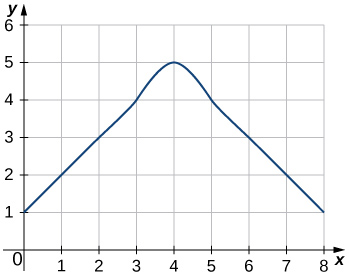
43)
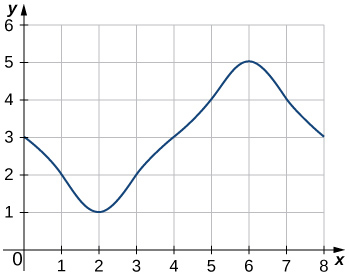
- Answer
44)
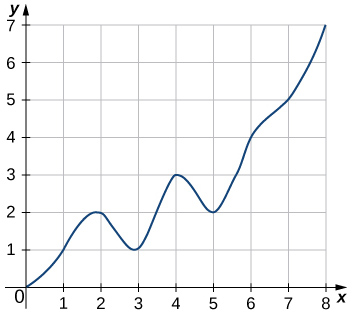
45)
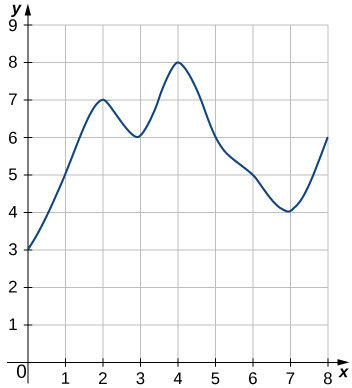
- Answer
46) [T] Use a computer algebra system to compute the Riemann sum,
47) [T] Use a computer algebra system to compute the Riemann sum,
- Answer
48) [T] Use a computer algebra system to compute the Riemann sum,
In exercises 49-50, use a calculator or a computer program to evaluate the endpoint sums
49) [T]
- Answer
By symmetry of the graph, the exact area is zero.
50) [T]
In exercises 51 - 52, use a calculator or a computer program to evaluate the endpoint sums
51) [T]
- Answer
52) [T]
53) Explain why, if
- Answer
- If
is a subinterval of under one of the left-endpoint sum rectangles, then the area of the rectangle contributing to the left-endpoint estimate is between and is but above the horizontal line segment at height , which is positive. As this is true for each left-endpoint sum interval, it follows that the left Riemann sum is less than or equal to the area below the graph of on
54) Explain why, if
55) Show that, in general,
- Answer
56) Explain why, if
57) For each of the three graphs:
a. Obtain a lower bound
b. Obtain an upper bound

- Answer
- Graph 1: a.
Graph 2:
Graph 3: a.
58) In the previous exercise, explain why
59) A unit circle is made up of n wedges equivalent to the inner wedge in the figure. The base of the inner triangle is 1 unit and its height is
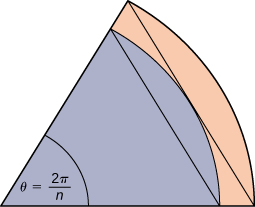
- Answer
- Let
be the area of the unit circle. The circle encloses congruent triangles each of area , so congruent triangles each of area

